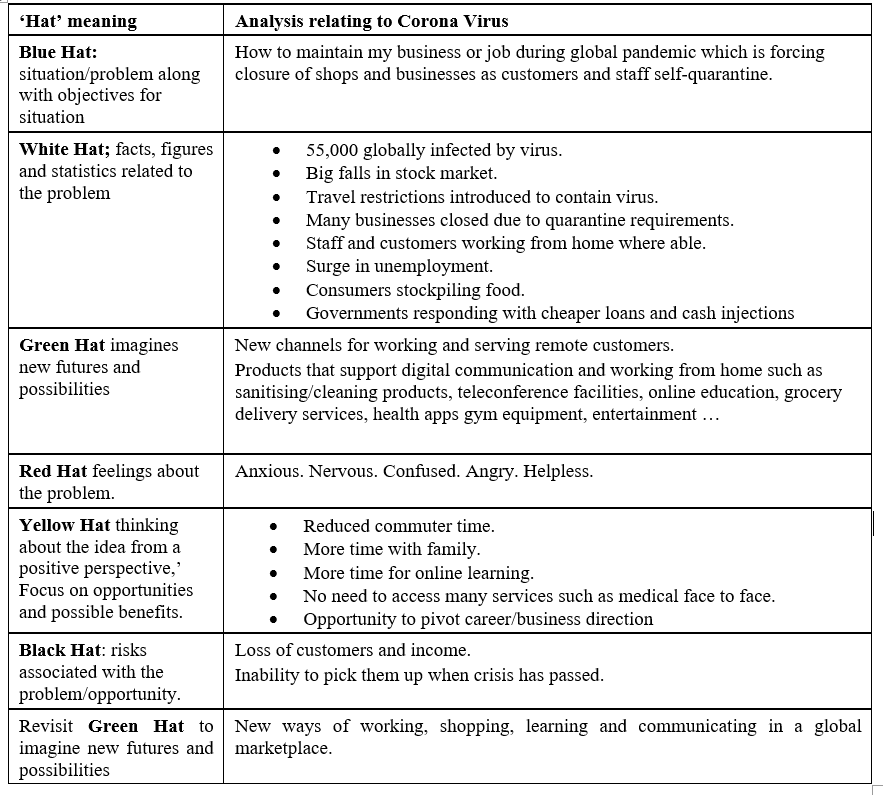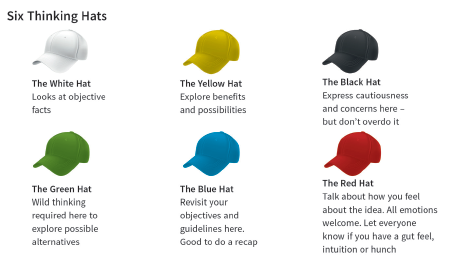Everyone is impacted by the Corona Virus / Covid-19 whether you are an employee or have your own business.
I recently shared a blog on how to use Edward de Bono’s Six Thinking Hats to solve complex problems.
I’ve been thinking about the challenges presented by the Corona Virus so applied the model to this problem.
Here’s what I came up with.
Hopefully it will help you to think through any opportunities that could emerge from this dreadful pandemic.






